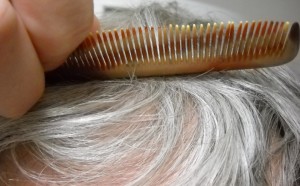Difference between apraxia and dysarthria

Apraxia is characterized by loss of the ability to execute or carry out learned purposeful movements.
Apraxia vs dysarthria
Apraxia is the inability to perform previously learned movements despite having the desire and physical strength to perform the activity. Dysarthria simply is difficult articulation; ‘dys’ means abnormal or difficult and ‘arthria’ means articulation of words while speaking. Both are central nervous system disorders and both have the same outcome of error and difficulty in speech.
Dysarthria results from a neurological injury of the motor component of the motor speech system i.e. the neuromuscular system involved in talking. Apraxia is an acquired disorder of motor planning. Apraxia results from an impaired ability to generate the motor programs for speech movements like moving the tongue in a particular fashion. In dysarthria, there is an error in transmission of the impulses controlling motor movements for speech. Dysarthria is disrupted muscular control due to lesions of either the central or the peripheral nervous systems, meaning there will be difficulty in pronunciation of words. Dysarthria may be caused by a lesion in the brain (tumour), nerve damage during surgery, neuromuscular diseases (myasthenia gravis, Parkinson’s disease) and due to toxic injury by alcohol. Dysarthria is an error of transmission but apraxia is error of planning or the requisite programming needed for a movement to take place. In apraxia, the person has the will and knowledge to speak but cannot implement the order. The auditory input and comprehension are also normal in apraxic individuals.
Lesions of the central nervous system (brain and spinal cord) cause spastic dysarthria where there is continued contraction of muscles whereas lesions of the peripheral nervous system cause flaccid dysarthria where there is complete relaxation of muscles. The errors occurring in dysarthria are consistent and predictable consisting mainly of distortions and omissions of speech.
Apraxia occurs due to damage to the cerebrum especially, the parts of the cerebrum involving the speech. Hence, apraxia is always due to a central nervous system lesion and never peripheral nervous system lesion. In apraxia, the errors are different when a person has a spontaneous speech and the errors are different when a person speaks a learned, repeated speech. Mostly people have substitutions, repetitions and additions errors. Aspects of speech like articulation, phonation, resonance, rate and respiration are affected in dysarthria whereas all these are almost normal in apraxia.
Changes in the muscle tone may affect dysarthria as the movement of tongue, lips and soft palate all is affected. Hence, often there are associated problems of difficulty in swallowing food in patients suffering from dysarthria. In apraxia, the muscle tone is not affected making this is a very important pointof differentiation between the two entities. Another striking feature is that as the rate of the speech increases, the intelligence of the speech decreases in case of dyarthric persons but is the reverse in case of apraxic individuals.
Treatment of dysarthia involves treatment of the basic lesion causing the impediment of speech along with speech and occupational therapyby specially trained Speech Language Pathologists (SLP). Apraxia can be treated by speech therapy, physical and occupational therapy along with treating psychological issues as there is difficulty in putting words in a correct order and occasionally, there is inability to find the right word too.
Summary:
Apraxia is the incapability to perform voluntary actions despite the will and physical capacity to perform them. It is the lack of the motor programming needed to execute an action. Dysarthria is the inability to speak due to damage to the motor speech areas of the cerebrum. Apraxia can affect any action from speech to hand movements to walking etc. Treatment for apraxia is by speech and occupational therapy while dysarthria can be corrected by treating the underlying neurological cause.
- Difference between near sightedness and far sightedness - January 21, 2015
- Difference between Diverticulosis and Diverticulitis - January 20, 2015
- Difference between Prilosec and Nexium - January 19, 2015
